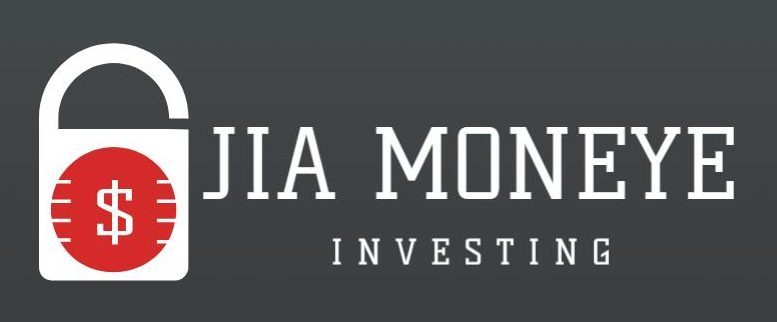
How to Dispute Errors on Your Credit Report
Understanding the Basics of Bankruptcy: A Comprehensive Guide to Credit Debt Management
Navigating bankruptcy can be a daunting task, especially for those who are unfamiliar with the intricacies of credit debt management. It is a complex process that requires a comprehensive understanding of the basics of bankruptcy. This article aims to provide a guide to managing credit debt and navigating through the labyrinth of bankruptcy.
Bankruptcy is a legal process that allows individuals or businesses unable to pay their debts to seek relief from some or all of their debts. In other words, it is a tool that can provide a fresh start by wiping out debts that one cannot pay. However, it is not a process to be taken lightly. It can have serious long-term financial consequences and should be considered as a last resort after exploring all other debt management options.
The first step in understanding bankruptcy is to recognize the different types. The two most common forms of bankruptcy for individuals are Chapter 7 and Chapter 13. Chapter 7, also known as liquidation bankruptcy, involves the sale of a debtor’s non-exempt assets by a trustee. The proceeds are then distributed to creditors according to the priorities established in the Code. On the other hand, Chapter 13, often referred to as reorganization bankruptcy, allows debtors to keep their property and repay creditors in a three or five-year court-approved repayment plan.
It is also crucial to understand the impact of bankruptcy on credit scores. Filing for bankruptcy can significantly lower one’s credit score and remain on the credit report for seven to ten years, depending on the type of bankruptcy filed. This can make it more difficult to obtain credit, buy a home, get life insurance, or sometimes, get a job. However, it is not impossible to rebuild credit after bankruptcy. With time, patience, and a plan, one can gradually improve their credit score.
Another essential aspect of bankruptcy is the role of the bankruptcy trustee. The trustee is an impartial third party appointed by the court to oversee the bankruptcy case. Their role includes reviewing the bankruptcy papers and supporting documents, conducting the meeting of creditors, selling the debtor’s non-exempt property, and distributing the proceeds to the creditors.
Lastly, it is important to note that not all debts can be discharged in bankruptcy. Certain types of debts, such as child support, alimony, certain tax debts, and most student loans, cannot be eliminated in bankruptcy. Therefore, it is essential to consult with a knowledgeable bankruptcy attorney to understand which debts can be discharged.
In conclusion, navigating bankruptcy requires a comprehensive understanding of the basics of bankruptcy and credit debt management. It is a complex process with serious financial implications. However, with the right knowledge and guidance, it is possible to navigate through bankruptcy and start on a path towards financial recovery. It is always advisable to seek professional advice before making any decisions regarding bankruptcy. Remember, bankruptcy is not the end but a chance for a fresh start.
Understanding the Basics of Bankruptcy: A Comprehensive Guide to Credit Debt Management
As we look ahead to the year 2024, the real estate market presents a plethora of investment opportunities. However, to fully capitalize on these opportunities, it is crucial to have a comprehensive understanding of financial management, particularly in the area of credit debt. One aspect of this is understanding the basics of bankruptcy, a topic that can seem daunting but is essential for any investor to grasp.
Bankruptcy is a legal process that provides relief to individuals or businesses that are unable to pay their debts. It is a tool that can be used to manage credit debt, but it is not without its consequences. It can significantly impact one’s credit score, making it more difficult to secure loans or credit in the future. Therefore, it is not a decision to be taken lightly.
There are several types of bankruptcy, but the most common are Chapter 7 and Chapter 13. Chapter 7 bankruptcy, also known as liquidation bankruptcy, involves selling off assets to pay off debts. This type of bankruptcy can be a viable option for those with a large amount of unsecured debt, such as credit card debt or medical bills. On the other hand, Chapter 13 bankruptcy, also known as reorganization bankruptcy, involves creating a repayment plan to pay off debts over a period of three to five years. This type of bankruptcy can be a good option for those with a steady income who want to keep their assets.
Understanding the basics of bankruptcy is just the first step in credit debt management. It’s also important to understand how to avoid bankruptcy. This involves careful financial planning and budgeting, as well as understanding the terms of any loans or credit you take on. It’s also crucial to keep an eye on your credit score, as this can impact your ability to secure loans or credit in the future.
In the context of real estate investment, understanding bankruptcy and credit debt management is particularly important. Real estate investments often involve taking on significant debt, and the ability to manage this debt effectively can be the difference between a successful investment and financial ruin. For example, if a real estate investor is unable to manage their debt and ends up filing for bankruptcy, they may be forced to sell off their properties to pay off their debts. This could result in significant financial loss and could potentially ruin their investment portfolio.
However, with careful planning and management, real estate investment can be a lucrative opportunity. The real estate market in 2024 is expected to offer a variety of investment opportunities, from residential properties to commercial real estate. By understanding the basics of bankruptcy and credit debt management, investors can better navigate the financial landscape and make informed decisions about their investments.
In conclusion, understanding the basics of bankruptcy and credit debt management is crucial for anyone looking to invest in the real estate market in 2024. By having a comprehensive understanding of these topics, investors can better manage their finances, avoid bankruptcy, and capitalize on the investment opportunities that the real estate market has to offer.
Steps to Successfully Dispute Errors on Your Credit Report
Credit reports play a pivotal role in determining your financial credibility. They are used by lenders, landlords, and even employers to assess your financial responsibility. Therefore, it is crucial to ensure that your credit report is accurate. However, errors can occur, and when they do, it’s essential to know how to dispute them effectively.
The first step in disputing errors on your credit report is to obtain a copy of it. You are entitled to a free credit report from each of the three major credit bureaus – Experian, Equifax, and TransUnion – once every 12 months through AnnualCreditReport.com. Once you have your report, review it thoroughly for any inaccuracies. These could range from incorrect personal information to erroneous account details.
Upon identifying an error, the next step is to gather supporting documentation. This could include bank statements, payment records, or any other relevant documents that can substantiate your claim. Having solid evidence will strengthen your case when disputing the error with the credit bureau.
Following this, you should write a dispute letter to the credit bureau. This letter should clearly identify each error, explain why you believe it is incorrect, and request that it be corrected or removed. Be sure to include your full name and address, and attach copies of your supporting documents. It’s advisable to send this letter by certified mail, with a return receipt requested, so you have proof of what the credit bureau received.
Once the credit bureau receives your dispute, they are required by law to investigate the items in question, usually within 30 days. They will forward your dispute to the organization that provided the information, who will also investigate your claim. If the provider finds the disputed information to be inaccurate, they must notify all three credit bureaus so they can correct the information in your credit report.
After the investigation is complete, the credit bureau must provide you with the results in writing, along with a free copy of your credit report if the dispute resulted in a change. This report does not count as your annual free report. If the dispute is not resolved to your satisfaction, you can ask that a statement of the dispute be included in your future credit reports.
In addition to contacting the credit bureau, it’s also a good idea to reach out to the company that provided the erroneous information. Write a letter similar to the one you sent to the credit bureau, detailing the error and providing supporting evidence. If the company agrees with your dispute, they should correct the error and notify the credit bureaus.
Disputing errors on your credit report may seem like a daunting task, but it’s a necessary one if you want to maintain your financial health. By following these steps, you can ensure that your credit report accurately reflects your financial history, which can open doors to better interest rates, more favorable loan terms, and more opportunities for credit. Remember, it’s your right to dispute errors on your credit report, and doing so can significantly improve your financial future.


